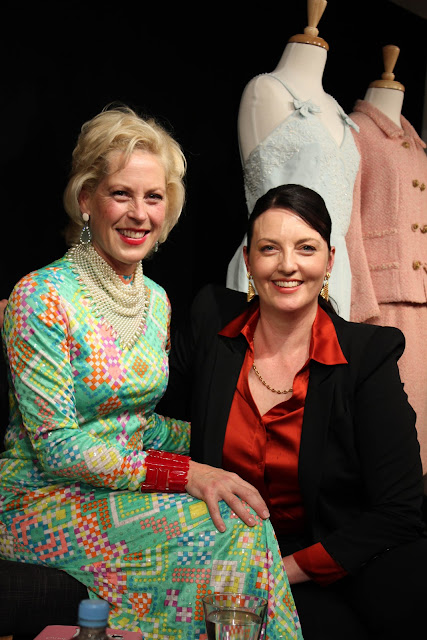 |
| Charlotte Smith and journalist Meri Fatin |
When Charlotte Smith inherited a collection of vintage clothing from her Pennsylvanian Quaker godmother, Doris Darnell, it changed her whole world. "I have a small shop in the Blue Mountains. When the crates arrived they blocked out the sun. It took three months to unpack everything", Charlotte.
What makes the Darnell Collection so unique, is that every garment has a story, a memory of who wore it, where they wore it, who made it, etc, creating a rich and vibrant social history of how women have changed over time.
 |
| Detail of Beryl Jents dress |
 |
| Beryl Jents, Australia, circa late 1960's, silk |
It includes three rare dresses dating from the early 1900's by Lucile. There are only 90 left in exsitence. Lucile designer, Lady Duff Gordon was a survivor of The Titanic and was the first designer to have fashion parades with manequins (live models). By 1922 she employed 300 people, with an in house doctor, dentist, a dining room with meals provided and paid maternity leave.
 |
| Vionnet Dress 1937 |
A vintage gem on display on the night was a dress by Vionnet. In the 1920's Vionnet pioneered the bias cut, revolutionising fashion by allowing the fabric to fall on the body to create shape, instead of creating the shape with garment its self. Vionnet was concerned about other designers copying her designs. She kept a photographic record of every garment, using mirrors to allow a camera to caputure all sides at once.
The Darnell Collection also includes pieces by Dior, Chanel, Gucci, Pucci, Prada and a whole lot more... I could have sat there all night listening to Charlotte talk about the collection. I got the feeling that what she shared just scratched the surface of the many varied stories that this collection has to offer.































No comments:
Post a Comment